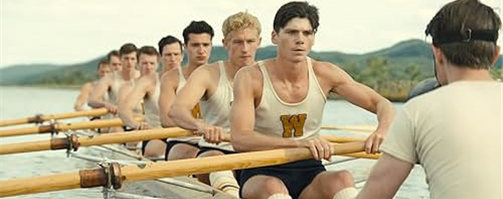
A War on the Water
Rowing is one of America’s oldest established team sports and has a vibrant culture and history. One such example is the best-selling book The Boys in the Boat, by Daniel James Brown, which captures the true story of a novice crew from the University of Washington and their triumph at the 1936 Olympics in Berlin. This incredible story has been adapted for the big screen and released on Dec. 25, 2023. I was one of the few lucky enough to watch the film early as the head coach of men’s rowing at the University of Virginia was able to orchestrate a viewing of the film before its release.
The film, similarly to the book, follows the story of Joe Rantz, a freshman at the university struggling to find a way to pay for his next semester. He learns of a job opportunity offered by the university’s rowing team that would cover his tuition and living arrangements. The only stipulation with the job? First, Joe needs to qualify for the team in tryouts. After several weeks of grueling practices, Al Ulbrickson, head coach at Washington, announces the freshman lineup with Joe listed as the seventh seat in the men’s freshman eight. Shortly after, Coach Ulbrickson announced the main goal for the future of the team: “to represent the United States in the 1936 Olympics.”
While the film tells the story of this motley crew team very well, it is hard to shrink down four years worth of experiences into 2 hours and 4 minutes. As such, it can be difficult to realize from watching the movie that the progression of the story takes place over the entirety of Joe’s college experience. With the time dilation and little reference to the time periods at different parts of the movie, it can be somewhat difficult for someone without any prior knowledge of the film to realize how much work truly went into reaching their Olympic goals. The movie leaves out information that wasn’t necessarily integral to the story but does give the reader a grasp at some of the minute differences between our current time and 1936. Examples include how the train to the National Championship in Poughkeepsie only costs a dollar for a trip across the entirety of the United States.
With that small critique, my experience of the movie resonated deeply with my own experience in the sport, Joe falling asleep in class after an intense morning practice particularly. The movie does a wonderful job of capturing the anxiety a rower feels right before a race starts when everything feels like it’s almost moving in slow motion. Even without a background in rowing, this movie is a wonderful depiction of what motivation can truly accomplish, and I urge anyone with either an interest in historical events or possibly an interest in the sport itself to see this movie.







